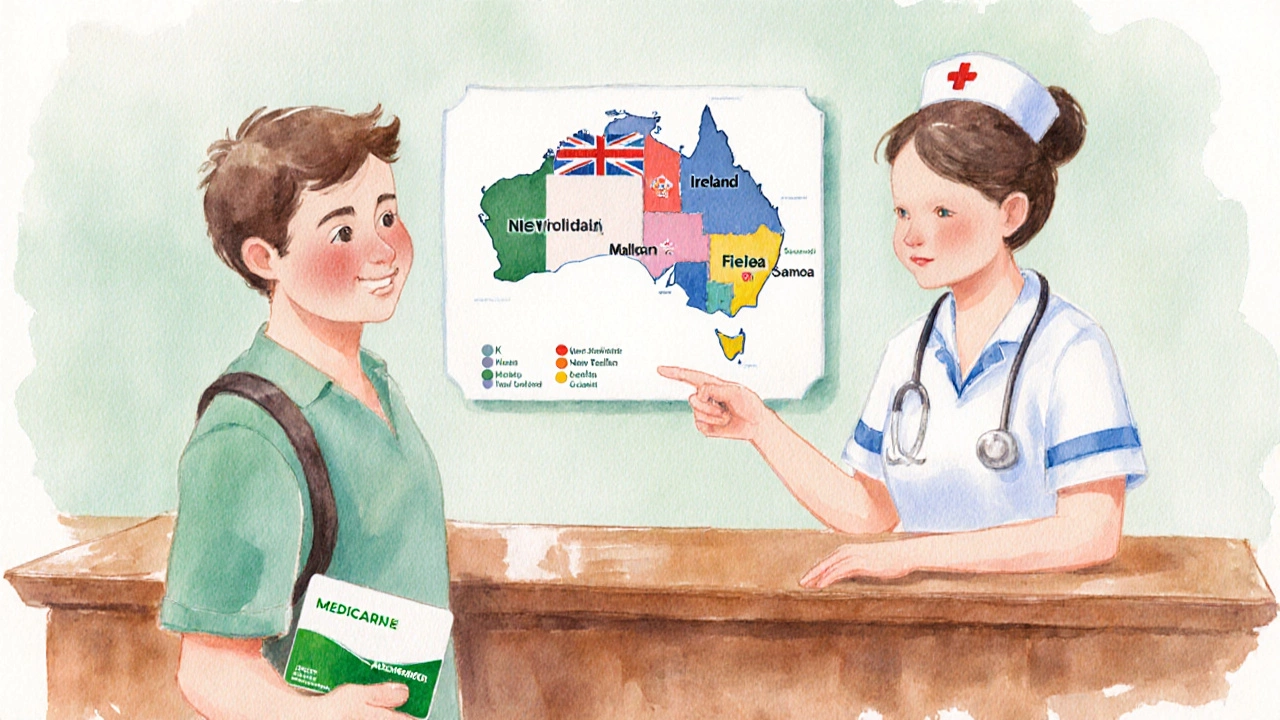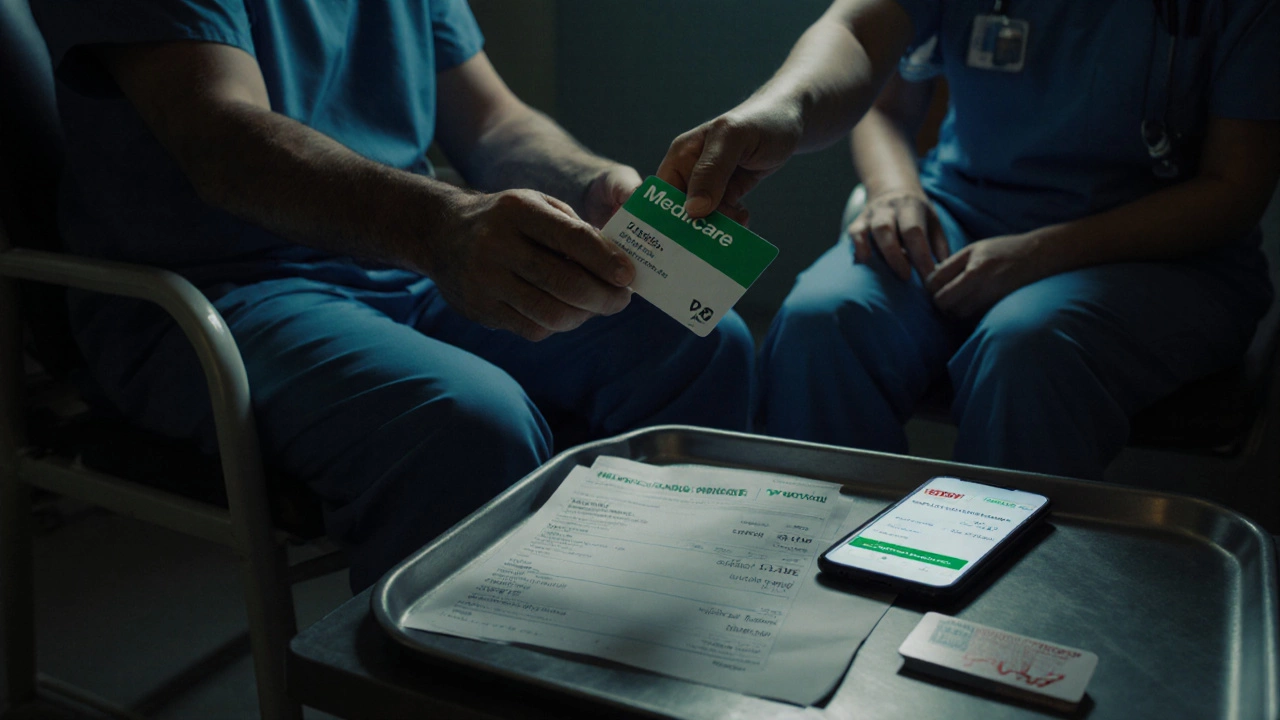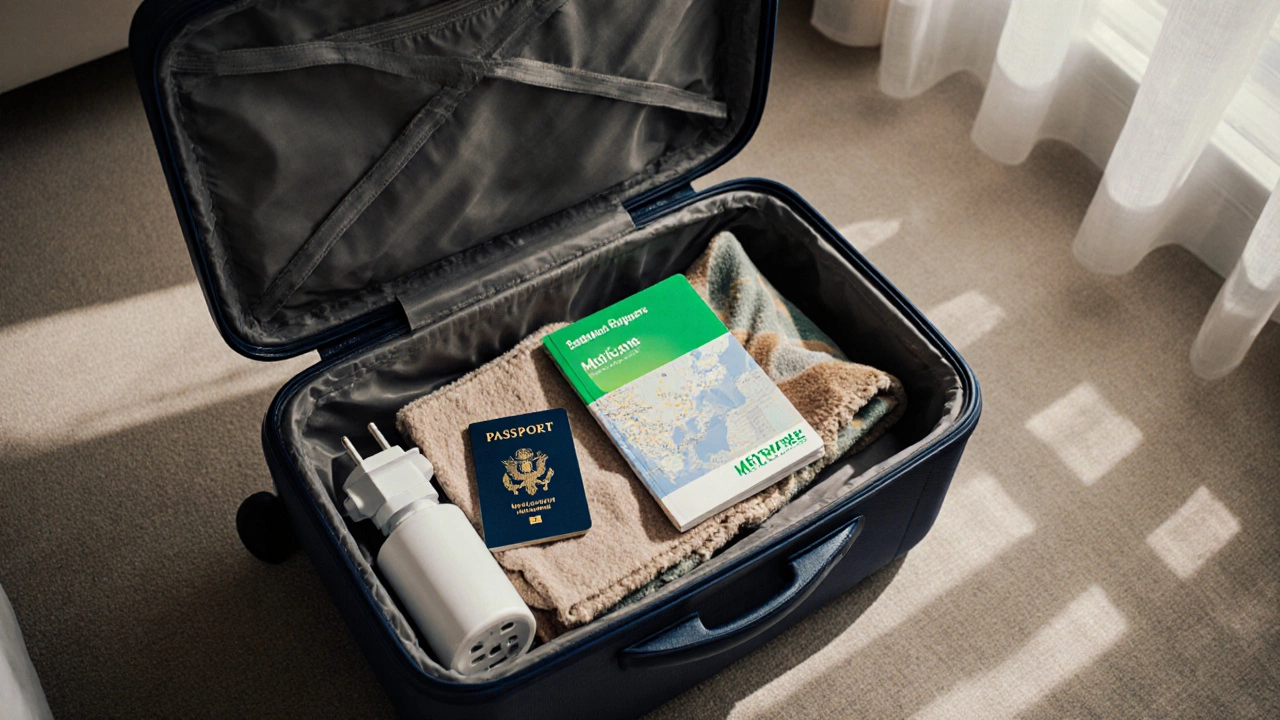Medicare Coverage Estimator
Check Your Travel Coverage
Enter your destination details to see if Medicare covers you and what costs you might face
Coverage Results
Select your travel details to see coverage information
When you pack for a trip abroad, you probably think about passports, adapters, and maybe a travel guide. But have you ever wondered whether you should slip your Medicare card into that suitcase too? In this guide we’ll unpack what Medicare actually does when you’re overseas, where it might help, where it falls short, and what you can do to stay safe without breaking the bank.
What the Medicare Card Actually Is
Medicare card is a green‑and‑white plastic card issued by the Australian Government that proves you’re eligible for publicly funded health services. It’s the gateway to free or subsidised doctor visits, hospital stays, and prescription medicines while you’re inside Australia. The card itself doesn’t contain a magnetic stripe or chip; it’s simply an identifier that the health system recognises.
How Medicare Works Outside Australia
Unlike some national health schemes that have worldwide agreements, Medicare’s overseas coverage is limited. The Australian Government’s Department of Health runs a handful of reciprocal health arrangements (RHAs) with a few countries, and it also offers a modest Emergency Medical Treatment (EMT) benefit for short trips. Let’s break each one down.
Reciprocal Health Agreements - The “Free‑Treat‑Me‑If‑You‑Can” Deal
Reciprocal health agreement is a treaty that lets Australian citizens access publicly funded health services in partner countries, usually at the same cost as locals. As of October 2025, Australia has RHAs with the United Kingdom, Ireland, Malta, New Zealand, and a few Pacific islands (e.g., Fiji, Samoa). The key points are:
- Coverage is limited to medically necessary treatment in public hospitals.
- You must present your Medicare card and a valid passport.
- The agreement does not cover private hospitals, elective procedures, or prescription medicines.
- Some states may require you to register with a local health authority on arrival.
If your destination isn’t on the RHA list, Medicare offers essentially no direct benefit.
Emergency Medical Treatment (EMT) - The Short‑Term Safety Net
For Australian residents travelling for up to 24 months, the EMT scheme provides a rebate for emergency treatment received in a public hospital overseas. It works like this:
- You present your Medicare card and passport at the hospital’s emergency department.
- The hospital submits a claim to the Australian Department of Veterans’ Affairs (yes, the same body that handles veterans’ health).
- The government reimburses you up to a capped amount per episode (currently A$1,000 for a single emergency, A$2,000 for multiple related treatments).
Things to note:
- The claim process can take weeks, and you may have to cover the bill upfront.
- EMT does NOT cover ambulance fees, medication, follow‑up appointments, or private facilities.
- If you’re travelling for more than 24 months, EMT no longer applies.

What You’ll Actually Pay If You Rely on Medicare Abroad
Even with EMT or an RHA, the out‑of‑pocket costs can surprise you. For example, a 2024 study by the University of Sydney on Australian travellers found:
- Average emergency bill in a non‑RHA country: A$2,400.
- Average reimbursement from EMT: A$850.
- Net cost to the traveller: A$1,550 (≈ 65 % of the bill).
- In the UK (an RHA partner), the same emergency cost A$1,200, fully covered by Medicare.
These numbers highlight that Medicare is a partial safety net at best, and only in specific scenarios.
Why Carrying Your Medicare Card Can Still Be Worth It
Even if the coverage is limited, there are practical reasons to keep the card with you:
- Identification: Some hospitals ask to see proof of Australian residency before processing EMT claims.
- Speed: Presenting the card can speed up paperwork, especially in public systems that recognise it automatically.
- Peace of mind: Knowing that at least a portion of emergency costs may be reimbursed can reduce anxiety.
In short, the card is a low‑effort tool that can shave off some red‑tape, even if it won’t cover everything.
Travel Health Insurance - The Real Companion for International Trips
Because Medicare’s overseas support is narrow, most savvy travellers invest in a dedicated travel health policy. Here’s how a good plan stacks up against Medicare:
| Feature | Medicare (RHA/EMT) | Travel Health Insurance |
|---|---|---|
| Geographic coverage | Limited to RHA partners + public hospitals | Worldwide (including private facilities) |
| Emergency treatment | Partial rebate up to A$2,000 | Full coverage (often 100 % after deductible) |
| Prescription medicines | Not covered abroad | Often included or optional add‑on |
| Evacuation & repatriation | Not covered | Standard in most policies |
| Pre‑existing conditions | Covered only if you’re a permanent resident and condition is stable | May require waiting period or surcharge |
For most international travellers, the extra cost of a travel policy (typically A$30-A$80 per week) is a small price for comprehensive protection.
Practical Checklist: What to Pack and Do Before You Go
- Verify if your destination is part of a Reciprocal health agreement. Check the Department of Health website for the latest list.
- If you’re relying on EMT, confirm the 24‑month limit and note the claim form (available online).
- Purchase a travel health insurance policy that covers the countries you’ll visit, and keep the policy number on a separate card.
- Make a photocopy or digital photo of your Medicare card and store it in a secure cloud folder - in case the physical card is lost.
- Carry a small amount of Australian dollars for any upfront hospital fees; many overseas hospitals accept cash only.
- Note the contact details of the Australian Embassy or Consulate in each country - they can assist with medical emergencies.
- Before departure, update your General Practitioner about any chronic conditions and obtain a letter summarising your medical history and current medications.
Following this list ensures you’re prepared whether Medicare kicks in or you need to call on your private policy.

Common Myths About Medicare and International Travel
- Myth: Medicare will pay for any hospital stay abroad.
Fact: Only public hospitals in RHA countries or emergency rebates under EMT are covered. - Myth: I don’t need travel insurance if I have Medicare.
Fact: Travel insurance fills the huge gaps - private care, evacuation, and full cost recovery. - Myth: I can use Medicare to get prescriptions overseas.
Fact: The Pharmaceutical Benefits Scheme (PBS) does not apply outside Australia.
What to Do If You Need Care Abroad
Imagine you’re in Bangkok and a sudden stomach flu lands you in the ER. Here’s a step‑by‑step approach:
- Ask the staff to note your Medicare card number on the admission form.
- Pay the initial bill (or a portion) using cash or a credit card.
- Ask for an itemised invoice - you’ll need this for any reimbursement claim.
- Contact your travel health insurer as soon as possible; many have 24‑hour hotlines that can assist with paperwork.
- At home, fill out the EMT claim form (if eligible) and attach the invoice, passport copy, and card copy.
- Keep a record of all communications and receipts - the Department of Health may request additional proof.
Acting quickly helps you avoid delayed reimbursements and reduces the chance of surprise out‑of‑pocket expenses.
Where to Find Official Information
The most reliable sources are the Australian Government’s Department of Health pages, the Medicare online portal, and the website of the Australian Embassy in your destination country. They provide up‑to‑date RHA lists, EMT claim forms, and contact numbers for emergency assistance.
Bottom Line: Carry the Card, But Don’t Count on It
In practice, slipping your Medicare card into your travel bag is a smart move - it’s cheap, it can speed up paperwork, and it might give you a modest rebate in an emergency. However, relying on it as your sole health safety net abroad is risky. Pair the card with a solid travel health insurance policy, check reciprocal agreements ahead of time, and follow a clear pre‑travel checklist. That combo will keep you healthy and financially protected while you explore the world.
Do I need a Medicare card for travel within the EU?
No. The EU does not have a reciprocal health agreement with Australia, so Medicare provides no direct coverage. You’ll need travel health insurance for any medical care in Europe.
Can I use my Medicare card for a private hospital in New Zealand?
Only public hospitals are covered under the New Zealand RHA. Private facilities will require you to pay the full bill, which you can then claim through your travel insurance.
What is the maximum EMT rebate I can receive?
As of 2025, the cap is A$2,000 for a single emergency episode. The amount is reduced if multiple unrelated emergencies occur during the same trip.
Do I need to register with the local health authority in RHA countries?
Some states, like the United Kingdom’s NHS, require you to show your passport and Medicare card on arrival. Registration is usually quick and free for Australian visitors.
Is prescription medication covered overseas by Medicare?
No. The Pharmaceutical Benefits Scheme (PBS) only works inside Australia. You’ll need to bring a supply of your meds or obtain a doctor’s note for a foreign pharmacy, and any cost will be out‑of‑pocket unless covered by travel insurance.
Can I claim EMT reimbursement after returning to Australia?
Yes. You must submit the claim form within six months of the treatment, attaching the original invoice, a copy of your Medicare card, and a passport copy. Processing can take up to eight weeks.
